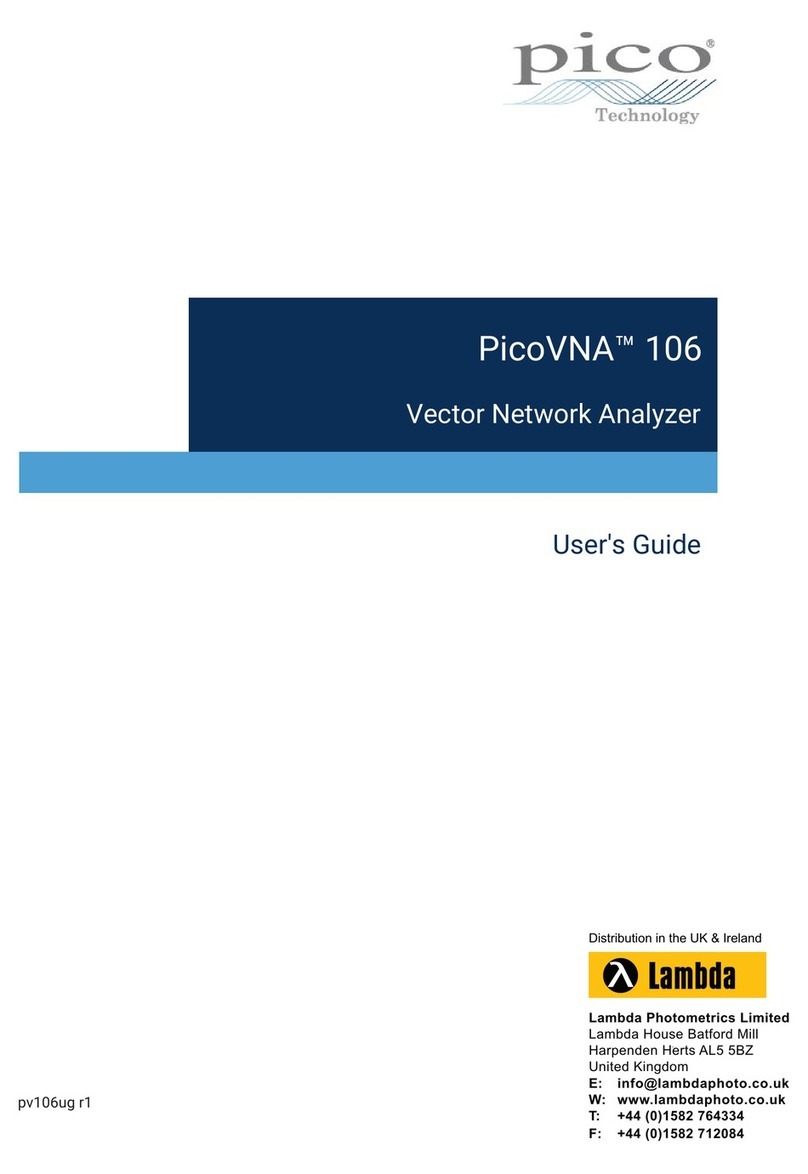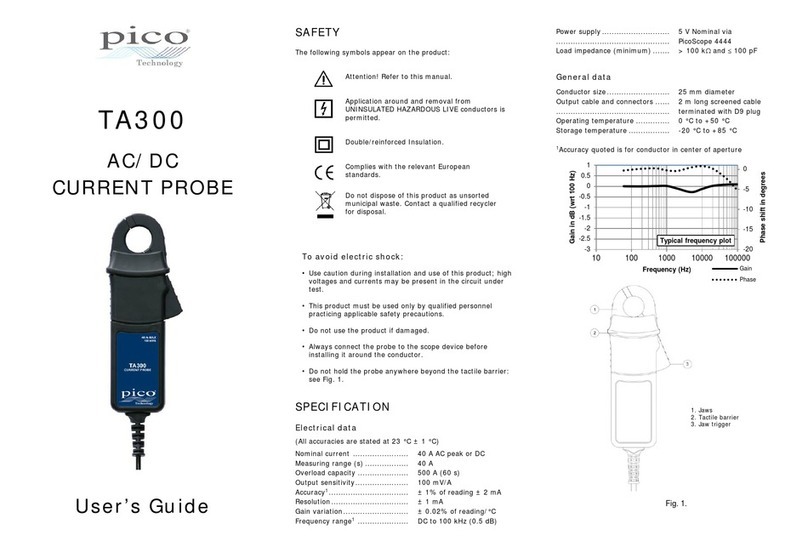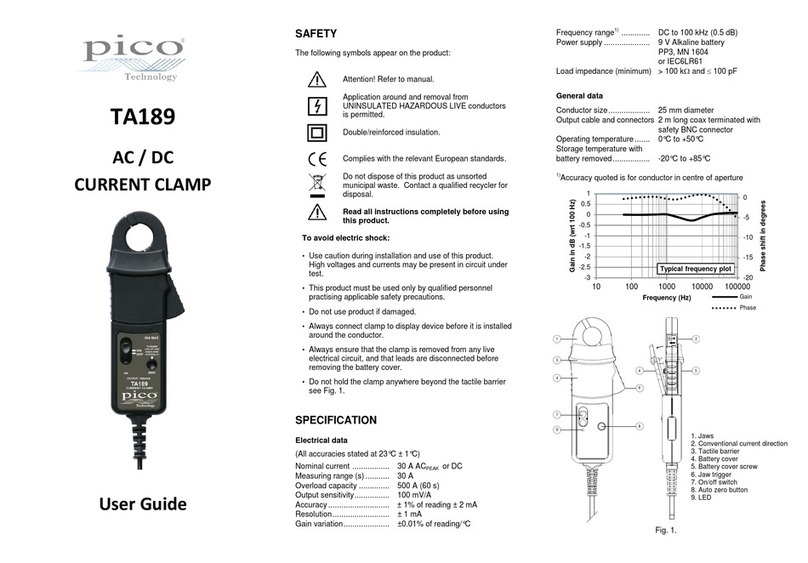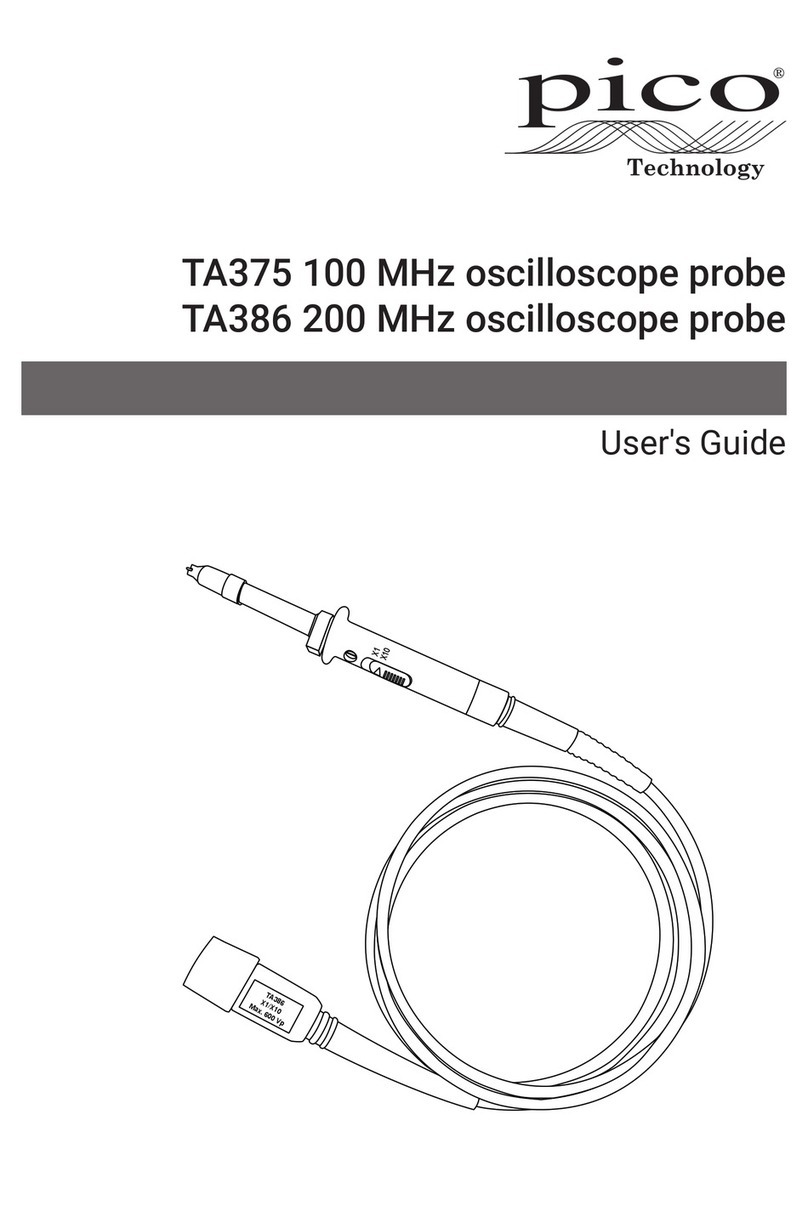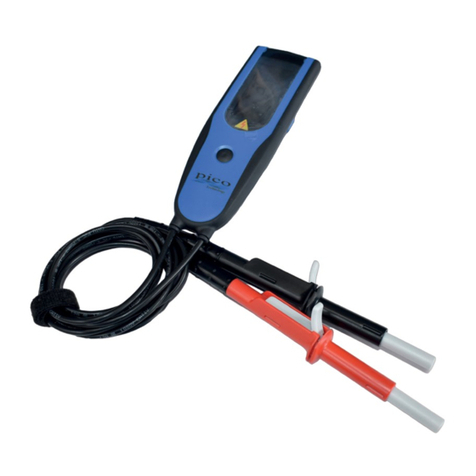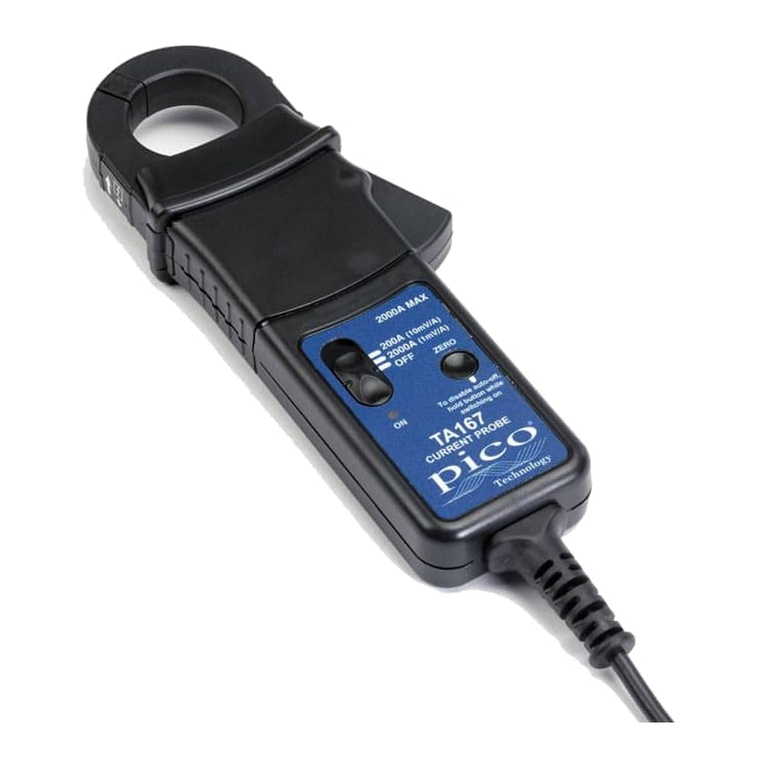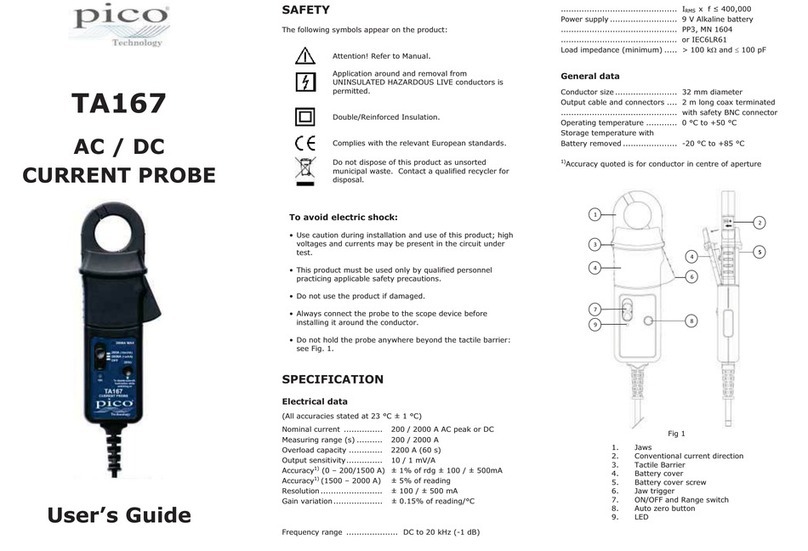
3DO337-1
Pico Technology P2036 and P2056 User's Guide
Safety
To prevent possible electrical shock, fire, personal injury, or damage to the product, carefully read
this safety information before attempting to install or use the product. In addition, follow all generally
accepted safety practices and procedures for working with and near electricity.
The product has been designed and tested in accordance with the European standard publication
EN61010‑031:2015, and left the factory in a safe condition.
The following safety descriptions are found throughout this guide:
A WARNING identifies conditions or practices that could result in injury or death.
A CAUTION identifies conditions or practices that could result in damage to the product or equipment
to which it is connected.
Symbols
These safety and electrical symbols may appear on the product or in this guide:
Symbol Description
Earth (ground) terminal
Terminal can be used to make a measurement
ground connection. The terminal is NOT a Safety or
protective Earth.
Possibility of electric shock
Caution Appearance on the product indicates a need to read
these safety and operation instructions.
Do not dispose of this product as
unsorted municipal waste.
WARNING
To prevent injury or death only qualified personnel should use this product, only as instructed
and with only accessories supplied or recommended. Protection provided by the product may
be impaired if used in a manner not specified by the manufacturer.
Maximum input voltage
The table and frequency derating plot below indicate the maximum input voltage for these probes.
This is the maximum voltage that can be safely and accurately measured using the probes. The
maximum input voltage depends on the signal frequency, the measurement category and also on the
instrument with which the probe is used.
WARNING
To prevent electric shock, do not attempt to connect voltages outside the probe's voltage
rating, or above the oscilloscope's maximum input voltage multiplied by the attenuation ratio
of the probe, whichever is lower. When using accessories with the probe, the lower rating /
measurement category always applies to both probe and accessories connected to it. If an
accessory is not marked with a voltage rating on either the connector, cable or body, or if a
protective finger guard is removed, then do not exceed the EN61010 “hazardous live” limits
overleaf.
Model Instrument Maximum input voltage
P2036
&
P2056
In combination with PicoScope 6000E * ±200 V DC+AC peak (not in CAT II, III or IV)
Maximum for probe with any instrument 300 V RMS (CAT II)
400 V RMS (not in CAT II, III or IV)
* When used with the PicoScope 6000E, maximum input voltage to the probe is limited to ten times the instrument’s
maximum measuring range of ±20 V.












